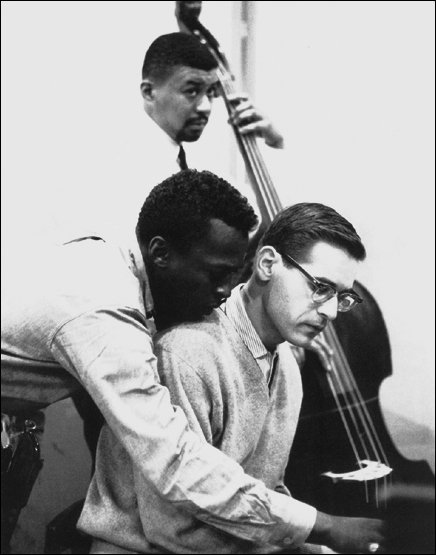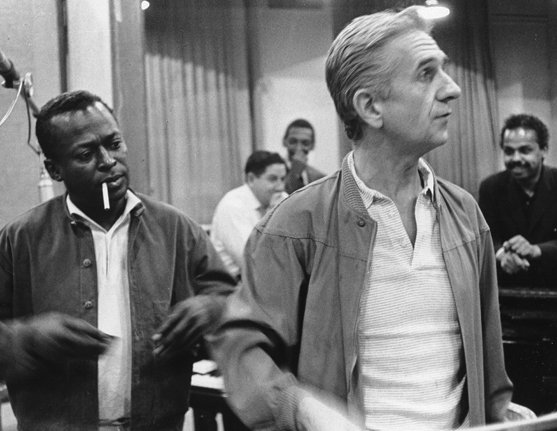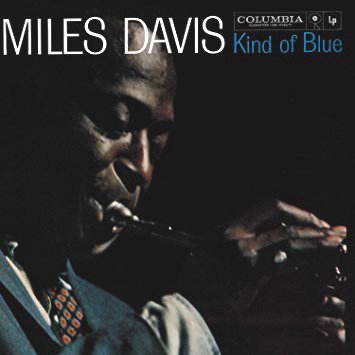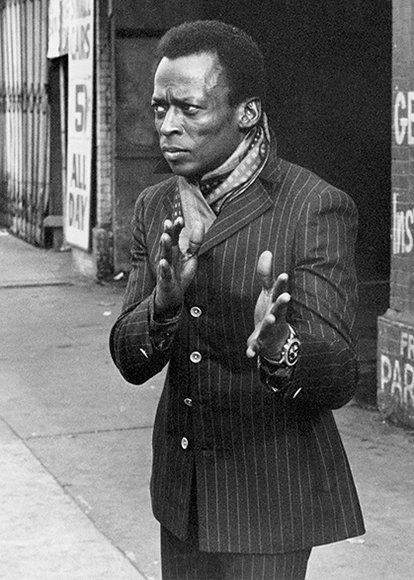Wayne Shorter (saxo tenor), Miles Davis (trompeta), Herbie Hancock (piano), Ron Carter (contrabajo) y Tony Williams (batería). Extraído del álbum Sorcerer (1967) de Miles Davis.
Después de regresar a Nueva York, Davis recompuso su quinteto con Coltrane, que se había rehabilitado de su adicción, y añadió al saxofonista alto Cannonball Adderley, convirtiendo la banda en un sexteto. En 1958 grabaron para Columbia Records Milestones, que consiste en una serie de piezas rápidas y de tiempo medio con una energía descomunal, y en el que Davis comienza a introducir el jazz modal. Después sustituyó a Philly Joe Jones por Jimmy Cobb a la batería, y a Red Garland por Bill Evans, que sabía tocar jazz modal. Evans hizo una gira con el grupo, pero luego se marchó, así que Davis contrató a Winton Kelly con su estilo de swing. También en 1958 Miles Davis grabó otra vez con Gil Evans un álbum titulado Porgy and Bess con una orquesta basándose en la ópera de George Gerswin de 1935. Evans escribió pasajes orquestales en forma de transiciones, componiendo así una larga obra musical. El álbum fue muy elogiado por la crítica siendo reconocido como la mejor colaboración entre ellos.
After coming back to New York, Davis recomposed his quintet with Coltrane, who had been rehabilitated from his addiction, and added the alto saxophonist Cannonball Adderley, turning the group into a sextet. In 1958 they recorded for Columbia Records Milestones, which consists of a series of fast and medium tempo pieces with enormous energy, and in which Davis began to introduce modal jazz. He then substituted Philly Joe Jones for Jimmy Cobb on drums and Red Garland for Bill Evans, who could play modal jazz. Evans toured with the group, but then left, so Davis hired Winton Kelly with his swinging style. Also in 1958 Miles Davis recorded again with Gil Evans an album entitled Porgy and Bess with an orchestra based on George Gerswin’s 1935 opera. Evans wrote orchestral passages in the form of transitions, composing a long musical work. The album was highly praised by critics being recognized as the best collaboration between them.


En 1959 Davis grabó el que fue su mejor álbum, Kind of Blue, y para ello volvió a llamar a Bill Evans, familiarizado también con las teorías de George Russell sobre el jazz modal, que utiliza modos musicales en lugar de progresiones de acordes como marco armónico. De este modo dio un gran salto hacia una estructura más simple, pero abierta, que hacía hincapié en la melodía. Sin embargo, encargó a Wynton Kelly que tocara en «Freddie Freeloader». Como era común en Davis, no tuvieron ensayo y los músicos no sabían lo que iban a grabar. Solo dio a la banda bocetos de escalas y líneas melódicas para improvisar. Cuando Davis reunió a los músicos, les dio breves instrucciones para cada tema y luego el sexteto se puso a grabar en el estudio. Los resultados finales fueron excelentes, llenos de interpretaciones rebosantes de vitalidad. «So What» y «All Blues» se convirtieron en estándars de jazz. El álbum fue un éxito absoluto con una amplia difusión radiofónica y sigue siendo el álbum de jazz más vendido de todos los tiempos.
In 1959 Davis recorded what was his best album, Kind of Blue, and he called Bill Evans, who was also familiar with George Russell’s theories on modal jazz, that uses musical modes rather than chord progressions as a harmonic framework. In this way he took a great leap towards a simpler, but open structure, which emphasised the melody. However, he appointed Wynton Kelly to play at “Freddie Freeloader”. As was common in Davis, they didn’t have rehearsal and the musicians didn’t know what they were going to record. He only gave the band sketches of scales and melodic lines to improvise. When Davis gathered the musicians together, he gave them brief instructions for each track and then the sextet began recording in the studio. The final results were excellent, full of interpretations overflowing with vitality. “So What” and “All Blues” became jazz standard. The album was an absolute success with a widespread radio broadcast and stays the best-selling jazz album of all time.


La introducción la hacen Hancock y Carter, y después se incorpora el resto del grupo para exponer el tema, que va a tiempo medio y se puede recordar con facilidad. A continuación entra Davis con un solo agudo y juguetón que interpreta de forma expresiva e inspirada. Después la banda toca otra vez el tema y Shorter presenta un discurso excéntrico intentando salirse de las normas establecidas mientras Carter toca notas de forma aleatoria y Williams impulsa la música hacia adelante. Luego bajan el volumen para que Hancock exponga una línea melódica marcando bien las notas y creando una atmósfera íntima y reservada. Por fin, el grupo reexpone el tema y la sección rítmica termina la pieza musical.
The introduction is made by Hancock and Carter, and then the rest of the group joins in to expose the theme, which goes at medium tempo and easy to remember. Next comes Davis with a sharp and playful solo that performs in an expressive and inspired way. Then the band plays the theme again and Shorter presents an eccentric speech trying to get out of the established rules while Carter plays notes in a randomly and Williams pushes the music forward. Afterwards, they turn the volume down so that Hancock exposes a melodic line marking well the notes and creating an intimate and reserved atmosphere. Finally, the group re-exposes the theme and the rhythm section ends the musical piece.

Translated with the help of DeepL
℗ Columbia Records


Si te ha gustado el tema, quizá querrás escuchar también los anteriores de este álbum:
If you liked the track, you might also want to listen to the previous ones on this album:


#hive #posh